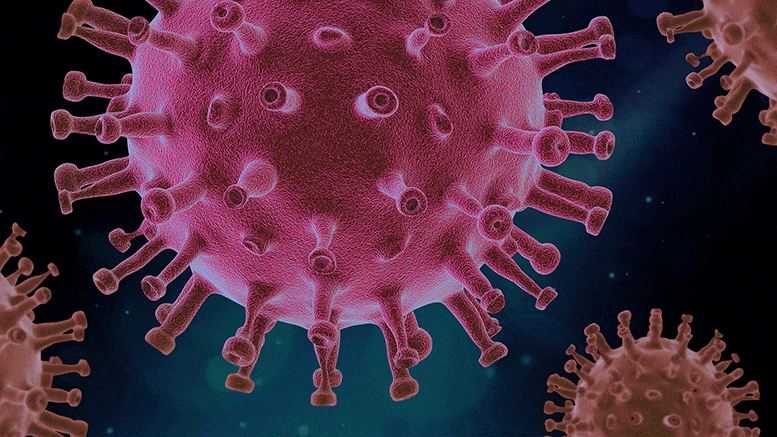
Solution: Russian researchers have created a special method of molecular modeling called ‘on-top docking.’ They used it to explore the whole surface of a protein that is vitally important for SARS-CoV-2 and compared it to a number of known medications.
One of them is used to treat alcohol addiction, and the other is for cancer.
A team of chemists from HSE University and the Zelinsky Institute of Organic Chemistry used molecular modeling to find out that two medications that have been known for a long time can be used to fight SARS-CoV-2.
These are disulfiram, which is used to treat alcoholism, and neratinib, an experimental drug being used to treat breast cancer.
Both drugs are potential covalent inhibitors of the SARS-CoV-2 virus main protease Mpro – a key enzyme responsible for SARS-CoV-2 replication (copying its genetic material and building the new virus particles).
Clinicians around the world have risked trying various experimental protocols, with the use of medicines used to treat HIV (lopinavir and ritonavir), malaria (chloroquine and hydroxychloroquine), and other diseases.
This path – repurposing medicine – has been effectively used for a long time.
With such a background, the researchers jumped into the search for a SARS-CoV-2 treatment in 2020.
This means that new strains of SARS-CoV-2 appear regularly.
The best candidates for this are conservative proteins, such as theSARS-CoV-2 virus main protease Mpro.In addition to being resistant to mutations, Mproplays a major role in coronavirus replication, which means that its inhibition (blocking its function) is able to slow down or even completely stop its reproduction inside the body.
Usually, the process of docking, as with a port dock and a ship entering it, is used for molecular modeling in simple cases.
One is called a ‘ligand’ (here, it is a medicine), and the other one is ‘receptor’ (or active site) of the target protein, such as Mpro, which can be used to ‘dock’.
The researchers used the spatial model ofSARS-CoV-2 Mprocreated in January 2020 from PDB database (ID 6LU7).
The research team’s own algorithms were used for modeling.
The modeling data demonstrated that sulfur-containing drugs show unusually high ligand efficiency at the active center of SARS-CoV-2 main protease Mpro, but only disulfiram 4 retains stable interactions.
Today, it is most commonly used for treating alcoholism, since disulfiram inhibits the acetaldehyde dehydrogenase enzyme.
In addition to disulfiram, the Russian chemists were the first to predict the potential efficiency of neratinib, an irreversible tyrosine kinase inhibitor, against SARS-CoV-2.
Modeling has shown that both potential inhibitors of the main coronavirus protease (Mpro) are, presumably, covalent.
For example, disulfiram can probably block the Mpro enzymatic activity by thiol–disulfide exchange reaction, while neratinib binding suggests the possibility of covalent interaction similarly to covalent peptide inhibitors.
The research cycle consists of at least three stages: modeling, synthesis of potentially active structures, and biological (pharmaceutical) testing of the necessary activity – real, rather than calculated effectiveness of the drug.
The tests that were performed on July 27, 2020, at Reaction Biology Corp., a certified laboratory in the U.S., demonstrated that disulfiram really inhibits Mpro in 100 nm concentration, which confirmed the results of the modeling.
Unfortunately, the second substance – neratinib – demonstrated activity on Mpro, but it was insufficient for clinical use.
They have also detected potential activity of disulfiram to the SARS-CoV-2 virus main protease Mpro.
The team’s plans for late 2020 and 2021 include molecular modeling of treatments for diseases that have demonstrated their harmfulness but have not yet spread over the world.
It’s important to mention that any molecular modeling requires significant computational resources, and before cooperating with HSE University, the chemists had been able to use their method only on very limited terms.
Meanwhile, the global chemistry community is facing the next challenge – modeling the structure of an inhibitor for the protein of the G4 EA H1N1 virus – a novel swine flu that was recently been detected in China.
Reference: “Computational identification of disulfiram and neratinib as putative SARS-CoV-2 main protease inhibitors” by Victor S.